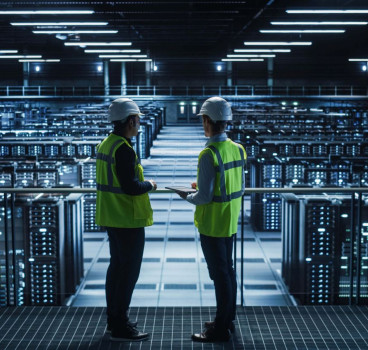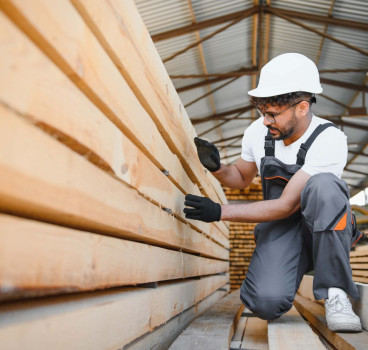Reclaiming polluted land for a sustainable future
Across the globe, sprawling industrial landscapes and abandoned sites cast long shadows, remnants of our dependence on heavy industry and unsustainable practices. These scars on the land, often contaminated with hazardous materials and pollutants, represent not just an environmental burden, but also a lost opportunity. However, a recent trend is gaining momentum, with architects and builders working to transform these blighted landscapes into vibrant communities, writes John Ridgeway
This process of returning polluted land to productive use, particularly for housing purposes, offers a unique solution for urban growth while addressing environmental concerns. To achieve this is a major challenge. Estimating the exact amount of polluted land globally is a bit of an unknown due to varying definitions, data collection methods and reporting inconsistencies. However, several sources provide insights into the scope of this issue.
UN Environment Programme (UNEP) suggests that globally some two million hectares (4.9 million acres) of land are degraded annually due to various human activities, including industrial pollution. Industrial sites in particular, contribute significantly to land pollution, with heavy metals, chemicals, and other contaminants posing serious health risks.
The Global Environment Facility (GEF) reports that an estimated 33% of the world's land exhibits some form of degradation, with varying degrees of severity. Like the UN it identifies industrial activities as a major contributor, leading to soil contamination with heavy metals, hydrocarbons, and persistent organic pollutants (POPs).
The Food and Agriculture Organization of the United Nations (FAO) estimates that 30% of global agricultural land is moderately to severely degraded, with potential contamination impacting food security and ecosystem health.
Bringing this land back into use has become even more urgent. With rapidly expanding populations and dwindling green spaces, cities face a significant challenge in providing affordable housing. The United Nations estimates that by 2050, the global urban population will reach 6.3 billion, putting immense pressure on housing resources.
Greenfield development, while seemingly simpler, comes at the cost of encroaching on valuable ecosystems and agricultural land. This is where brownfield redevelopment shines. By utilising existing, often centrally located land, it mitigates sprawl, promotes urban renewal, and offers a chance to remediate contaminated sites, protecting public health and the environment.
There are already many inspiring examples which showcase the potential of brownfield redevelopment for housing. King's Cross, London, once a derelict railway yard, has metamorphosed into a thriving mixed-use neighbourhood with residential flats, offices, and vibrant cultural spaces. The project involved extensive soil remediation, incorporating innovative water recycling and energy-efficient building practices. Today, it's a shining example of sustainable urban development, attracting residents and businesses alike.
Similarly, the Gasworks Park, Melbourne, a former gasworks site now boasts award-winning public housing with a strong focus on community integration and sustainability. The project prioritised the needs of residents, incorporating features like community gardens, playgrounds, and energy-efficient design. This green space now serves as a lung for the surrounding urban landscape, demonstrating how brownfield redevelopment can enhance both housing and environmental well-being.
The Euskal Etorbidea, Bilbao, an iconic waterfront development in Spain replaced industrial docks with a vibrant residential and commercial area. The project not only remediated contaminated soil but also revitalised the city's image. Today, it's a bustling hub of activity, attracting tourists and residents alike, showcasing the economic potential of brownfield redevelopment.
But while the benefits of brownfield redevelopment are undeniable, there are many challenges which still need to be addressed. Cleaning up contaminated land can be a significant expense, requiring specialised techniques and ongoing monitoring. Innovative solutions like bioremediation and phytoremediation, discussed later, are making the process more affordable, but careful cost-benefit analysis and strategic partnerships are crucial, but it comes at a price.
The extent of contamination, type of pollutants, and chosen remediation techniques significantly impact costs. Traditional methods like excavation and incineration can be exorbitantly expensive, reaching millions per acre. Additionally, ongoing monitoring and potential long-term liability further inflate the financial burden.
Fortunately, there are innovative solutions which are changing the game such as Bioremediation, which uses microorganisms like bacteria and fungi to break down contaminants naturally. While slower than traditional methods, it's often cheaper, more sustainable, and requires less disruption.
Then there is Phytoremediation, which leverages plants to absorb and degrade pollutants. It's particularly effective for certain contaminants and offers additional benefits like soil stabilisation and improved aesthetics.
Another alternative is Thermal Desorption, which heats contaminated soil to vaporise pollutants, capturing them for safe disposal. It's faster than traditional methods and can treat various contaminants, but energy costs need careful consideration.
While cost is a significant factor, it's crucial to weigh it against long-term environmental and social benefits. By choosing sustainable remediation methods, fostering partnerships, and conducting thorough analysis, brownfield redevelopment can become a financially viable and impactful solution for our future. That said, development of polluted sites creates other kinds of problems.
Concerns about residual contamination and potential health risks can, for example, deter residents from living in redeveloped areas. Transparency is key, and proactive community engagement through open communication and educational initiatives is needed to help build trust and overcome these anxieties.
Contaminated brownfield sites often lack basic infrastructure like roads, sewers, and green spaces. Integrating these elements into the redevelopment plan is essential for creating a liveable and sustainable community. Green infrastructure solutions like rainwater harvesting and permeable paving can be incorporated, further enhancing the environmental benefits of the project.
Brownfield redevelopment offers opportunities beyond housing construction. Public parks, recreational facilities, and commercial spaces can be integrated into the plans, fostering vibrant mixed-use communities. Additionally, renewable energy sources like solar panels and geothermal systems can be incorporated, creating energy-efficient and resilient neighbourhoods.
Despite the challenges, the potential of brownfield redevelopment is undeniable. Advancements in remediation technologies, coupled with innovative financing models and community-driven planning, are paving the way for a future where polluted land becomes a source of opportunity.
Collaborative efforts between governments, developers, communities, and environmental experts are key to unlocking this potential. By fostering an inclusive and transparent approach, we can transform brownfields into vibrant communities, contributing to a more sustainable and equitable future for all.
As our population grows, turning these polluted sites into homes is not just a technical feat, but a social and environmental imperative. It signifies a collective commitment to overcoming past mistakes and fostering a more sustainable future.
By addressing the challenges and harnessing the available solutions, we can leverage brownfield redevelopment not just for housing, but for creating thriving communities that embody environmental responsibility, economic vibrancy, and social well-being.
This journey requires courage, creativity, and collaboration, but the rewards are vast – a healthier planet, more equitable communities, and a brighter future for generations to come. By taking this step, we can truly demonstrate that even the deepest scars can be transformed into vibrant spaces, reminding us that hope and positive change are always possible.
Sources of Information:
- The Brownfield Coalition: https://smartgrowthamerica.org/program/brownfields/about-the-coalition/
- International Land Remediation Association: https://ilra.org/advocacy-resources/
- United Nations Environment Programme: https://www.unep.org/
- Environmental Protection Agency (US): https://www.epa.gov/brownfields
- Department for Environment, Food and Rural Affairs (UK): https://www.gov.uk/contaminated-land
Additional Blogs

What if Building Control went fully digital?
Building control governs structural integrity, fire protection, energy efficiency, accessibility and countless other aspects of design and construction. Historically, this process has been highly...
Read moreWhere most “Smart Buildings” go wrong
Smart buildings are often presented as the ultimate in modern construction - interconnected, efficient, intuitive and driven by real-time data. They promise lower operating costs, reduced energy use,...
Read more

The future of facilities management starts at RIBA Stage 0
Facilities management has traditionally been treated as a discipline that only becomes relevant once a building is handed over. At that point, FM professionals inherit decisions made months or years...
Read more